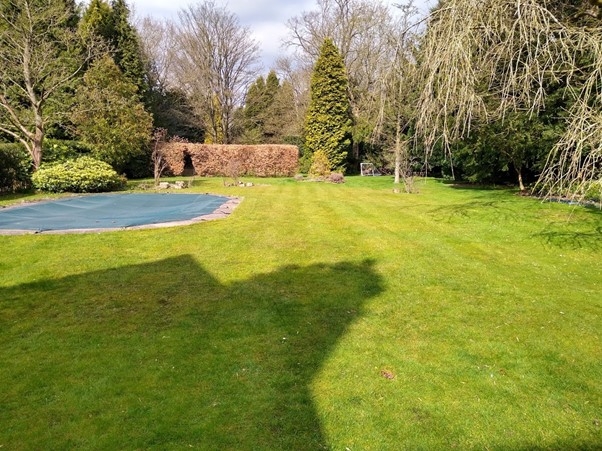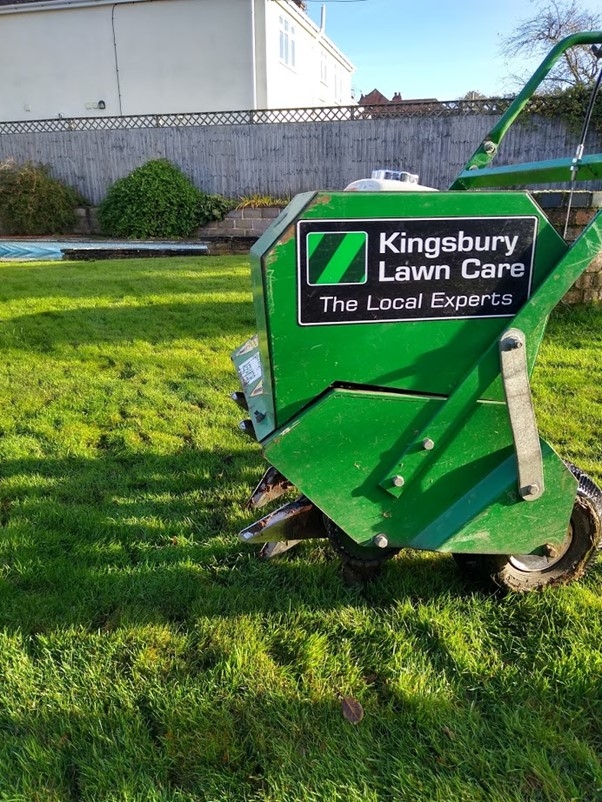Five Top Tips For Lawn Moss Control - Winter Lawn Care
Moss is a common issue in UK turf - if this be lawns or sports surfaces. Moss loves damp, mild conditions and in recent years our autumn and winter weather works to land us with more and more of it! How can we gain adequate control of moss?
Here's our five best methods of control - which includes caring for your lawn through the winter too!
Five Top Tips for Lawn Moss Control
1) Lawn Mowing
It may not be top of the list at this time of year, but moss is an invasive plant which enjoys damp conditions. This means that if your grass is being left too long, the base of your lawn could well be remaining damp for long periods, and suiting the development of moss.
At the other end of the spectrum, if you are mowing at your summer height of cut this likely to be a source of stress for your lawn. If the grass is placed under stress and thinning out, this gives moss an opportunity to outcompete your grass. Ryegrasses do not always enjoy shaded conditions that winter brings to many areas.
Be sure to leave enough leaf coverage to allow the grass a fighting chance in winter conditions. Maintaining a dense grass cover as we enter autumn and winter is key in combating moss, just like maintaining a thick, healthy lawn in spring will lessen weeds.

A large lawn in Sutton Coldfield in need of moss treatment, scarification, aeration and overseeding to correct the causes of moss growth to allow the lawn to flourish once again
2) Clear Leaves / Reduce Shade
Another tip which may be able to be acted upon quickly over the winter period is the amount of light the grass is benefitting from.
With the shorter days and weak sunshine, it's even more important that your lawn gains as much light as possible to remain healthy. Leaves and overhanging bushes / branches restrict the light available.
Some of our best lawn renovation turnarounds have involved some outsourced tree surgery prior to our main renovation work. If you're looking to upgrade your lawn this year, looking upwards could be the place to start in some cases.

Another lawn prior to starting treatments in the spring with a high level of moss growth. This lawn will be excellent with the correct work carried out with the lack of shade here
3) Nutrition
Turf needs nutrition all year around. Lawns, much like golf tees and cricket outfield areas of a similar height of cut require only very little amounts of nitrogen through the winter months to help with healthy growth, but this is only one element which your lawn needs to maintain its strength.
Key nutrients of phosphorous, potassium and magnesium play their role too. With our recent mild autumn and winter months, there are few weeks of the year where there isn't grass growth.
It is vital that your lawn is able to outcompete moss - our Lawn Maintenance Programme contains three moss control applications within our five visits to be sure we don't lose control of moss within the wettest and darkest months of the year.
Iron is a key element but as with any product it is important it is used at the correct rates and quantities for a sustainable programme.
4) Reduce Thatch
Thatch is the term given to dead matter found between the soil and the grass plants, made up of dead leaves, roots and stems. It is naturally produced, decomposing material.
Thatch is healthy to a lawn up to a level but soon becomes problematic for healthy grass growth. Thatch often spends its winter sat damp, and as we know this then becomes a lovely home to moss by the time we reach late-autumn / early-winter.
Moss is often the symptom with thatch the cause. If thatch build up is an issue, increasing the frequency and intensity of scarification is advisable. Within our Lawn Renovations we hit the thatch layer within lawns aggressively, before carrying out aeration and overseeding within the same call for multiple benefits.
We gain the best results on this work from mid-August through to early October.
5) Reduce Compaction and Improve Surface Drainage
If water isn't moving through the soil surface it could suggest that there is a soil compaction problem, or a deeper drainage issue. The process of aeration creates air pockets deeper into the soil, providing passages for water, fertiliser, air and root growth.
Moving water away from the surface is a must to reduce moss and as a preventative to disease issues over summer months such as red thread.
On a related note, lawns which suffer from localised dry patch through the summer months are prone to moss invasion through winter months. If water is gathering at the surface, and unable to penetrate soil layers this thatch, compacted thatched surface is going to suit moss development rather than grass growth.
Take samples with a soil sampler or with a trowel / spade to view how your soil is performing.

In Summary
Moss is a constant threat on our lawns when conditions allow. In comparison to sports pitches which often gain adequate light in winter months, our lawns are surrounding by buildings, walls, fences and trees blocking light to our lawns and thereby increasing the risk of moss development.
How We Can Help
Our Lawn Care Programme, when working in partnership with our clients does an excellent job in limiting the moss development which is possible within our lawns.
When a lawn has been left without care for some time then mechanical work of scarification, aeration and overseeding at the correct intensity is the usual method for lawns which are really suffering where moss has been choking the grass coverage for some time.
If we are able to help in any way, be that a mature lawn or the lawn of a new build, please feel free to submit a contact form, or speak to us now on 01827 826123.
